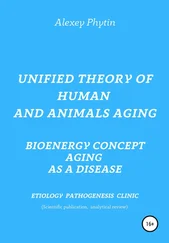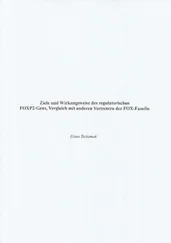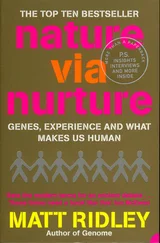Elena Tschumak
INFLUENCE OF FOX GENES ON AGING AND AGING-ASSOCIATED DISEASES
Inhaltsverzeichnis
FOX GENES AFFECT AGING AND RELATED DISEASES FOX GENES AFFECT AGING AND RELATED DISEASES
FOXP2 genes have a direct and indirect effect on aging
Influence of other members of Fox-family on aging processes
FOX genes and anti-aging agents
FOXP2 and neuroplasticity
FOXP2 and neurodegeneration
FOXP2 and Alzheimer
Further aging and neurodegeneration relevant FOXP2 targets
Structure and function of FoxP genes is responsible for his function
Natural products and FOXP Targets
Post-stroke FOXP2 expression and discussion on appropriate animal models to study FOXP2 language function
Further literature:
FOX GENES AFFECT AGING AND RELATED DISEASES
FOXP2 genes have a direct and indirect effect on aging
FOX genes include 19 highly conserved, structurally related families from FoxA to FoxS (Sridhar Hannenhalli and Klaus H. Kaestner, 2009). Different publications mentioned the role of FOXgenes in aging processes.
One of the main factors of aging is telomere attrition. Telomeres modulate Rb and p53, that decrease PGC-1α and PGC-1β expression (Sahin and Depinho, 2012) and activates the cyclin-dependent kinase inhibitor p21CIP1.16 H. Shelterin (consists of Tin2, Rap1, TRF1, TRF2, Pot1-TPP1 heterodimer) protects telomers and play a role in mtDNA damage. Telomeric heterochromatin is influenced by lncRNA TERRA via binding to TRF1, TRF2,ORC, HP1 and H3K9me3(Scaffidi et al., 2005; Han and Brunet, 2011).
Tanabe et al. described 2011 in „FOXP2 Promotes the Nuclear Translocation of POT1, but FOXP2 (R553H), Mutation Related to Speech-Language Disorder, Partially Prevents It“, how
FOXP2 influences on POT1 (protection of telomeres 1) as a FOXP2-associated protein. (Tanabe et al. reported protection of nuclear-colocated telomerase.) This gene POT1 as member of the telombin family encodes a nuclear protein involved in telomere maintenance. The loss of its POT1 function induces the cell arrest. The researchers identified that POT1 is alone localized in the cytoplasm but co-localized with FOXP2 and the forkhead domain of FOXP2 in nuclei. FOXP2 with mutated nuclear localization signals as well as R553H mutated forkhead, which is associated with speech-language disorder, prevented the nuclear translocation of POT1. The authors propose FOXP2 as a binding partner for the nuclear translocation of POT1.
According to Multanii and Chang, 2007 „WRN at telomeres: implications for aging and cancer“
POT1 is critically important for telomere extension by telomerase, POT1 functions to negatively regulate telomere length by competing with telomerase for access to the telomeric substrate.
Review Wohlgemuth et al, 2014 showed that FOXP2 also provided the NMDAR-mediated neuronal plasticity affecting MAPKK. It is known that Aging also influences free radicals via Fc-gamma receptor and phagocytosis via p42/p44 MAPK signalling pathways and aging relevant ROS activate inflammatory cascade reaction via JAK/STAT, NF-κB/MAPK .
Molina-Serrano et al. showed 2019 in „Histone Modifications as an Intersection Between Diet and Longevity“ that Lysine 4 on histone H3 can be found in one of three possible methylated forms: mono, di or trimethylated (H3K4me1, -2, and -3).The trimethylated form usually localizes at the promoter of actively transcribed genes (Santos-Rosa et al., 2002), and has been shown to have a strong implication with aging in several model organisms. S. cerevisiae H3K4 methyltransferase complex COMPASS mutants had significantly reduced lifespan (Smith et al., 2008; Ryu et al., 2014; Cruz et al., 2018). “H3K9me3 was only associated with antioxidant genes in females (Strakovsky et al., 2014). Paternal HF diet changed the epigenome in spermatozoa and offspring liver. Specifically, under HF diet, H3K4me was enriched in paternal sperm around the transcriptional start site (TSS) of genes involved in development regulatory processes such as Hoxd11, Hoxd13, Bai3, Foxp2, and Foxa2. In contrast, in the offspring liver, H3K4me was enriched in genes controlling lipid biosynthesis, fatty acid synthesis and the oxidation-reduction process (Terashima et al., 2015).Aging relevant H3K27ac and H3K14ac are acetylated via p300/CBP and its co-activator CREB. cAMP responsive CREB expression is responsible to fasting. So CBP, CREB, CRTC2 and TAF-4 activate together gluconeogenesis genes (Altarejos and Montminy, 2011)” (Molina-Serrano et al., 2019, p.11)
FOXP2 indirectly regulates the FEZF2, the RELN, the FOXO1 and the DYRK1A genes via theRUNX-AUTS2-TBR1cascadeIn a feedback loop the FEZF2 regulates FOXP2 expression. (Molyneaux et al., 2005) TBR1 also regulates RELN expression (Chen et al., 2002). The RELN in turn regulates FOXO1 expression, which is also indirectly regulated by RUNX2 (Kuhlwilm et al., 2013). It would be of great scientific interest to investigate further whether and to what extent FOXP2 expression via FOXO interaction can influence tumorigenesis and antiaging, as FOXO genes are generally known for their importance in cell cycle and apoptosis. (Kops et al., 2002)
Gascoyne et al. suggested 2015 in „The Forkhead Transcription Factor FOXP2 Is Required for Regulation of p21WAF1/CIP1 in 143B Osteosarcoma Cell Growth Arrest“ that “FOXP2 expression could be induced by MAPK pathway inhibition in growth-arrested 143B cells, but not in traditional cell line models of osteoblast differentiation (MG-63, C2C12, MC3T3-E1)” (Gascoyne et al., 2015, p.1) They studied a model in which transient upregulation of Foxp2 in pre-osteoblast mesenchymal cells regulates a p21-dependent growth arrest checkpoint and identified that Foxp2 expression is not neuronally restricted and is linked to regulation of the cell cycle via various mechanisms: p53 target gene cyclin-dependent kinase inhibitor p21, is as a primary controller of multiple diverse cellular pathways, e.g. neuronal differentiation, growth arrest of pre-osteoblast type 143B osteosarcoma cells etc. They reported that regarding the RUNX-2-dependent pathway for FOXP the bone-specific isoform of RUNX2, which these cells lack, is not a requirement for FOXP2 function and in “developing murine mesenchymal cells the loss of growth factor signalling upon entry to the periosteum might up-regulate Foxp2. Expression of Foxp2 during both osteoblast and some neuronal development appears to be transient and this is also observed for other family members”(Gascoyne et al., 2015, p.13), considered potential connections between FOXP2 and p53 pathways. “Normal osteoblast development is compromised in bone metastases of solid tumours and in bone malignancies such as multiple myeloma, and this characterisation of FOXP2 growth arrest function in a disease context may identify novel malignant pathways. Furthermore, FOXP2 status in osteosarcoma may provide information regarding the stage of developmental block, with potential clinical significance. Direct connection of FOXP2 to the mutated p53 pathway in osteosarcoma, via a common target p21/CDKN1A, is also likely to have implications for understanding osteosarcoma biology.” (Gascoyne et al., 2015, p.14)
Also the review of Wohlgemuth et al., 2014 showed that FOXP2 also provided the NMDAR-mediated neuronal plasticity affecting MAPKK and tyrosine phosphatase. The MARK is a RAS Downstream Effector. RAS is a GTPase that indirectly interacts with oncological relevant p21 and p53 indirectly. So FOXP2 can act alone or in combination with other members of its or other gene families. Its own expression can be influenced both by the cooperation partners and by the feedback loops or by other interactions. These innumerable tissue-specific regulation possibilities allow a fine-tuning and a rapid adaptation to ever-changing environmental conditions which need to be studied more closely.
Читать дальше










![John Bruce - The Lettsomian Lectures on Diseases and Disorders of the Heart and Arteries in Middle and Advanced Life [1900-1901]](/books/749387/john-bruce-the-lettsomian-lectures-on-diseases-and-disorders-of-the-heart-and-arteries-in-middle-and-advanced-life-1900-1901-thumb.webp)

